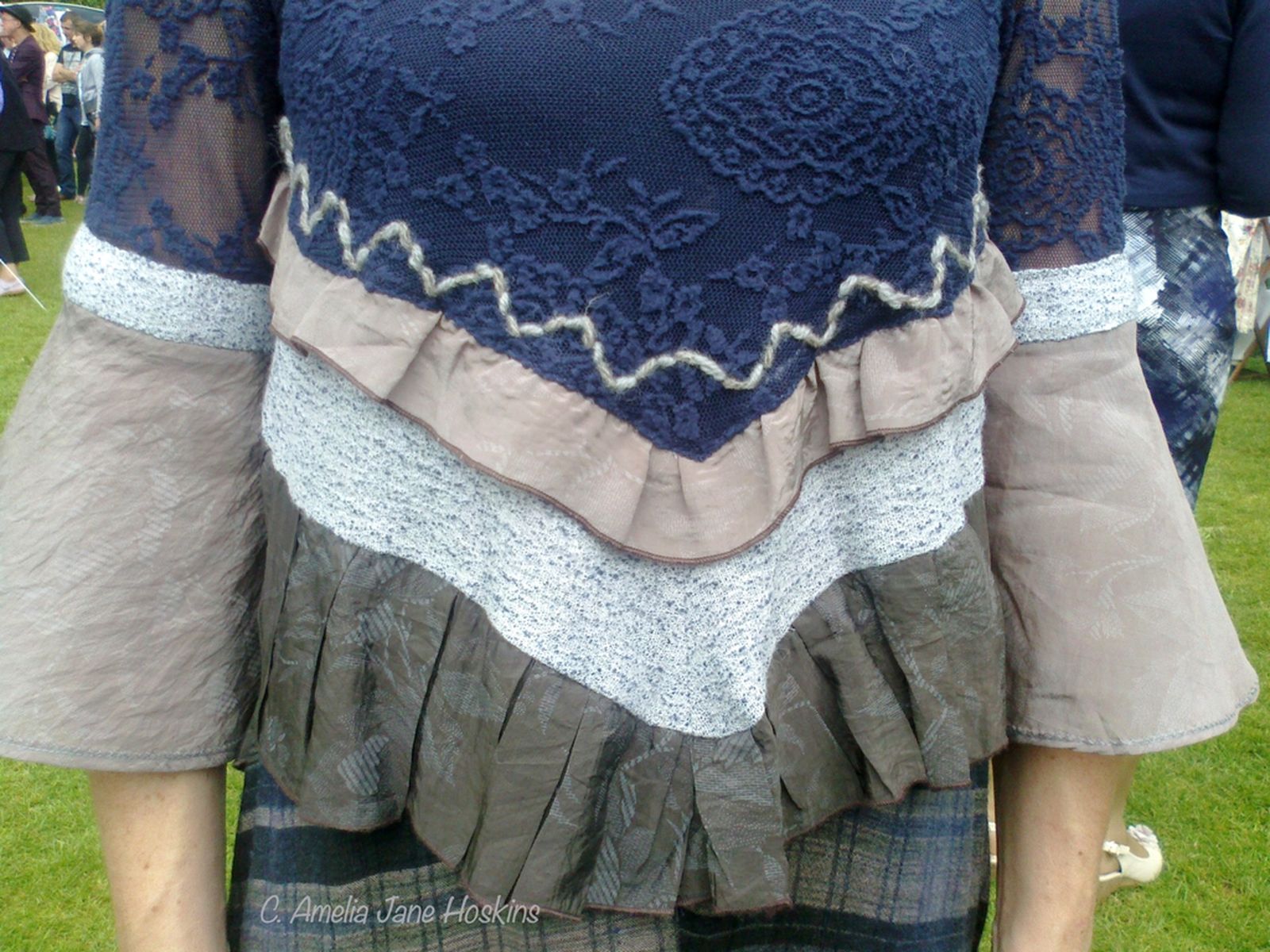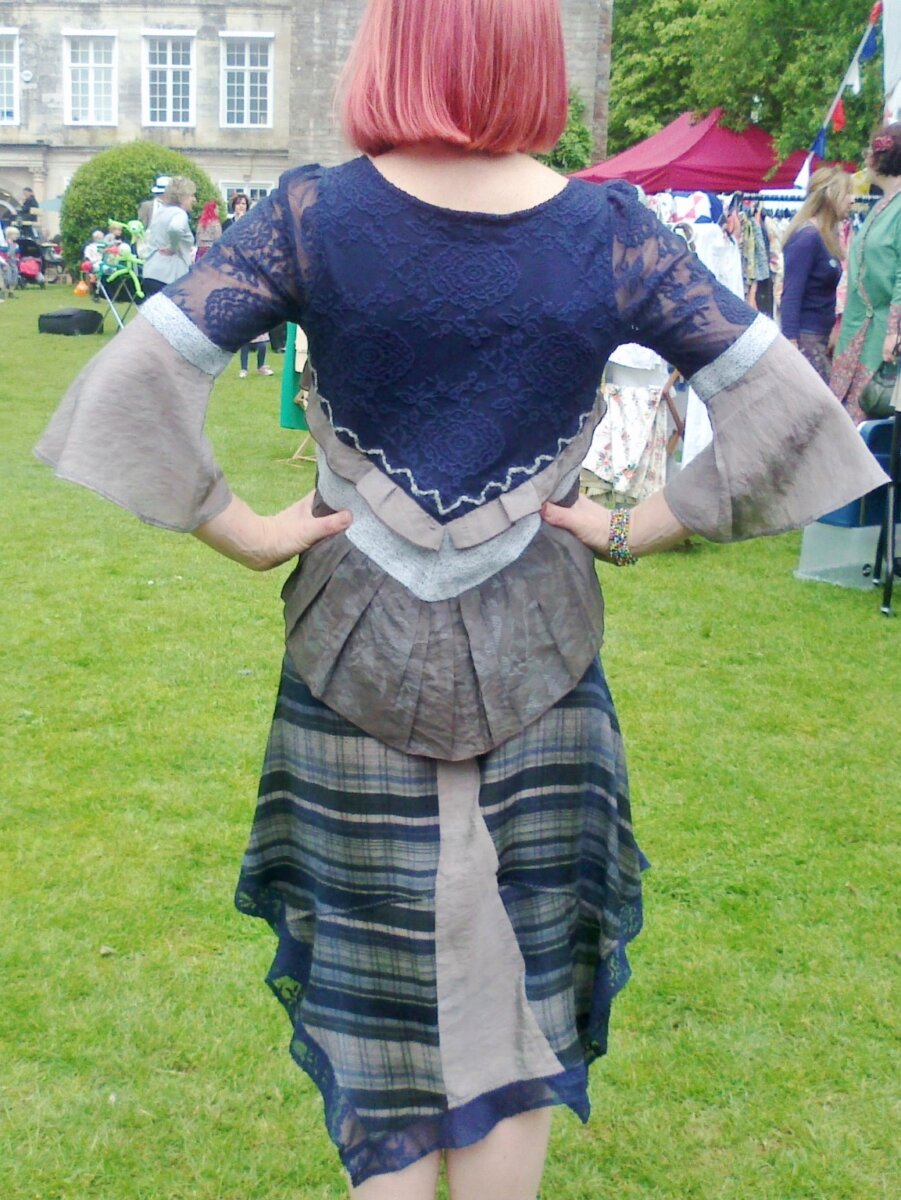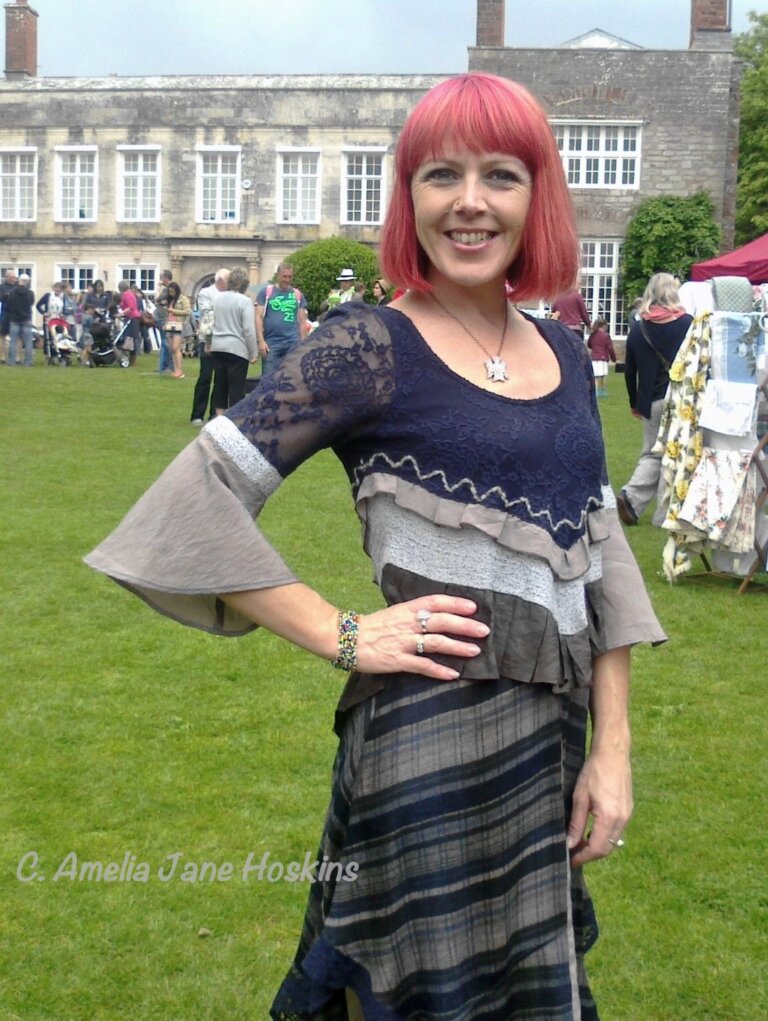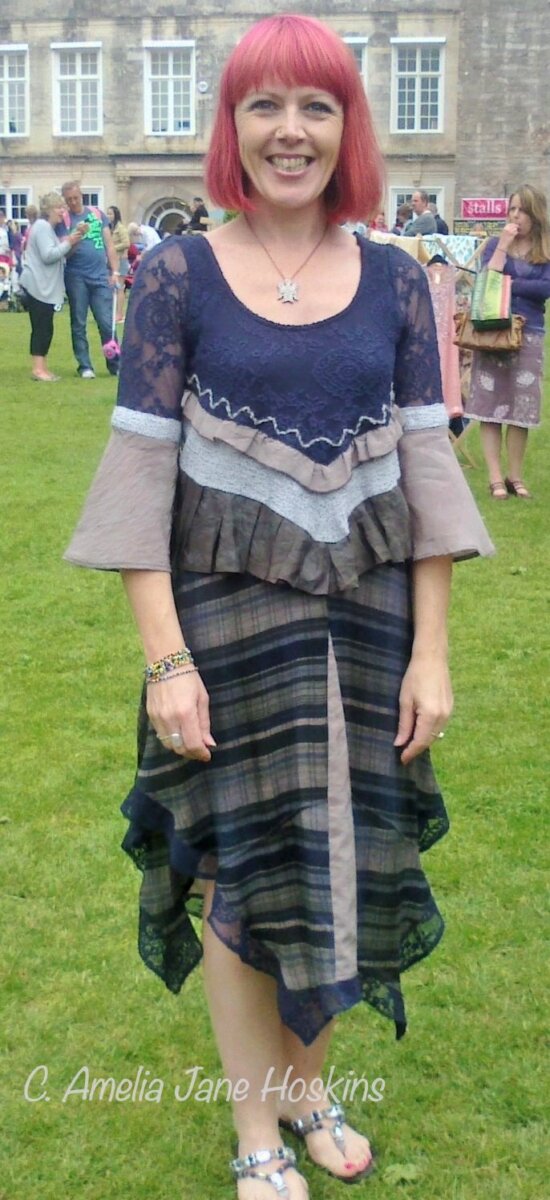Clothes Treasure Paradigm
A mixing of fabrics to create a NEW LOOK.
'Guinevere' dress modelled at Cockington Court Crafts show. [sold]. The name is suggested by the medieval style influence of the sleeves.
Rachel really liked this dress and was a perfect model for me as she was so happy trying it on. 'Guinevere' is a good example of a new way of designing clothes: a dress with contrasting fabric types, all held together by the coordinating of colours. A 'treasure paradigm'.
Lace knit - viscose - acrylic wool knit - polyester - wool-cotton.
I started with the navy lace as top piece, cutting the V shape, then adding the fabric frills to lower waist-hip position.
The khaki brown fabric frill and narrow beige frill echo the colours in the lower skirt pieces. Polyester beige and khaki had identical prints, very subtle.
Skirt tartan was soft fine wool texture. Beige 'V' inset to centre back and centre front to give more flare, as the original material was a small size.
Navy lace was cut from the same fabric as the top, to give a lace hem.
Its a bit wild in formulation, being an unusual mix of fabric types, but later sold in a shop.


The peplum is longer at the back, to give an elegance over the rear and to utilise the pleats which existed in the skirt it was taken from.
The skirt pieces are sewn up under the first beige peplum.
However skirt pieces became available, after cutting away from their original garment, I allow them to hang as they are, 'handkerchief style'. When insets are needed, to create flare, I add a coordinating hem, in this case lace as the top; which hols the whole structure together.
I prefer craft show sales where I meet the buyer; when it creates a relationship between the maker's effort and the end user. Its always nice to see the buyer in the garment.


